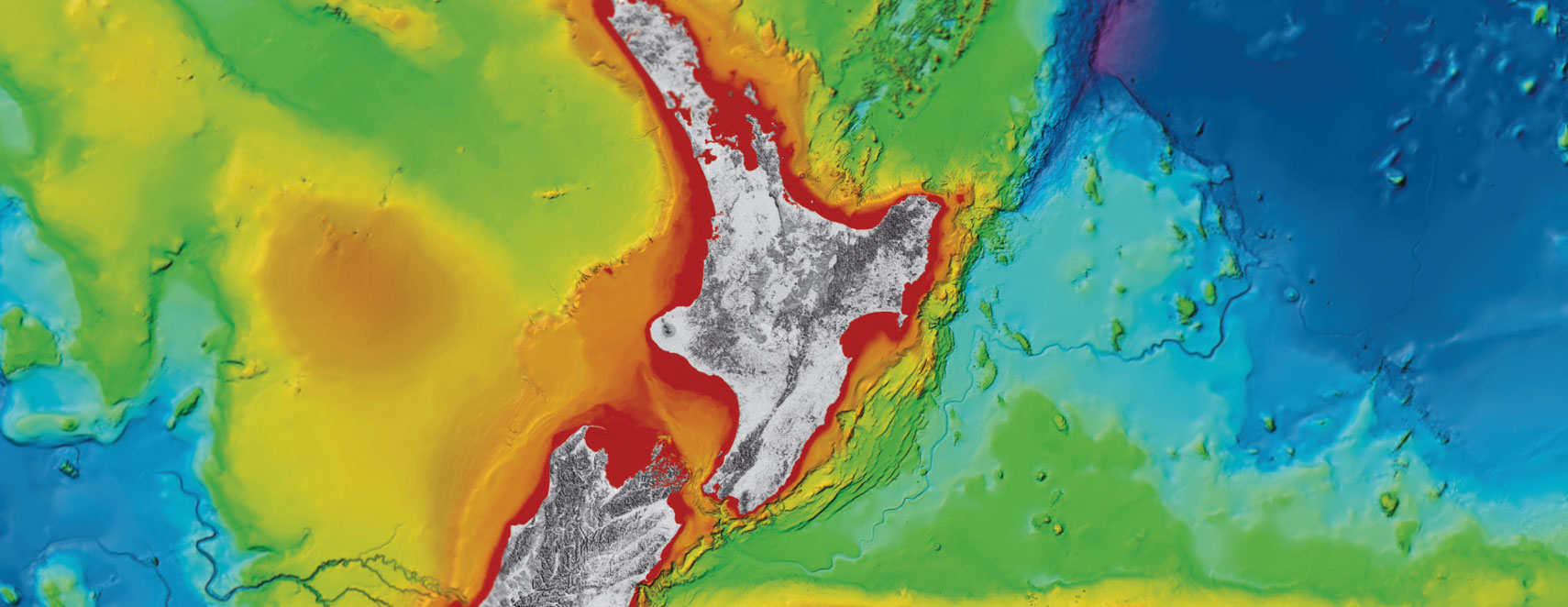
Moving mountains on the ocean floor may hold key to East Coast earthquakes
Earthquakes and slow slip events may be influenced by mountains on the ocean floor, or “seamounts”, according to new research co-authored by GNS Science.
A paper published today in Nature Geoscience magazine found that seamounts can have dramatic effects when they get pulled into a subduction zone.
Subduction zones are where one tectonic plate dives under another - and where the largest and most damaging earthquakes can occur.
Our findings show scientists need to carefully monitor what happens around a subducting seamount, so we can better understand where future quakes might occur.
The Hikurangi Subduction Zone runs along the East Coast of New Zealand, and this new research could help scientists better understand how seamounts there could influence behaviour.
The research featured in Nature Geoscience used cutting-edge computer modelling techniques to simulate what happens when seamounts enter a subduction zone.
“When a seamount sinks into a trench, the ground ahead becomes brittle and prone to earthquakes because the water is squeezed out,” GNS Science’s Susan Ellis says.
“This brittle rock can be a source for earthquakes.
“But in its wake, the seamount leaves softer, wet sediment, which can help dampen or slow down subduction slip.”
Dr Ellis says the weakened rock could be an important factor in slow-slip events – which are like earthquakes, but happen silently and slowly over weeks or months.
“Our findings show scientists need to carefully monitor what happens around a subducting seamount, so we can better understand where future quakes might occur.”
The study suggests that subduction of these undersea mountains could influence where earthquakes and slow-motion earthquakes (slow slip events) occur on subduction zones.
The predictions from the model agree with the locations of offshore tremors and slow slip events observed on the Hikurangi Subduction Zone offshore Gisborne, where one of these large undersea mountains is subducting.
This study was undertaken in collaboration with scientists from Pennsylvania State University and the University of Texas.
It was funded by the United States National Science Foundation and an MBIE Endeavour funded project led by GNS Science to understand the seismic and tsunami hazard posed by the Hikurangi Subduction Zone.
28 September 2021
Disclaimers and Copyright
While every endeavour has been taken by the East Coast Lab Hikurangi Subduction Zone M9 to ensure that the information on this website is
accurate and up to date, East Coast Lab Hikurangi Subduction Zone M9 shall not be liable for any loss suffered through the use, directly or indirectly, of information on this website. Information contained has been assembled in good faith.
Some of the information available in this site is from the New Zealand Public domain and supplied by relevant
government agencies. East Coast Lab Hikurangi Subduction Zone M9 cannot accept any liability for its accuracy or content.
Portions of the information and material on this site, including data, pages, documents, online
graphics and images are protected by copyright, unless specifically notified to the contrary. Externally sourced
information or material is copyright to the respective provider.
© East Coast Lab Hikurangi Subduction Zone M9 - www.eastcoastlab.org.nz / +64 6 835 9200 / info@eastcoastlab.org.nz
